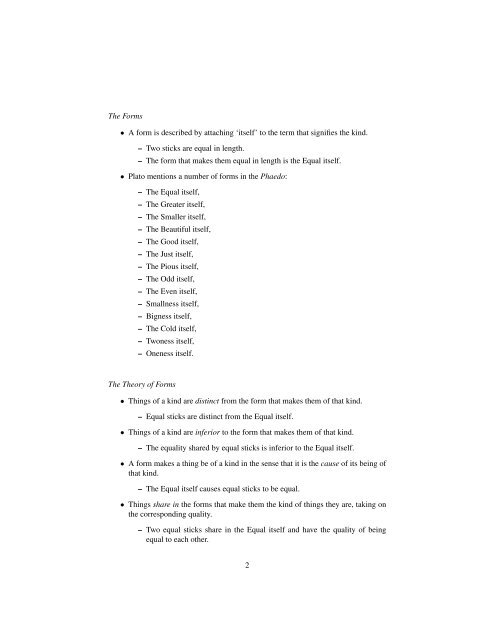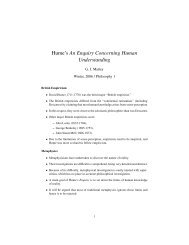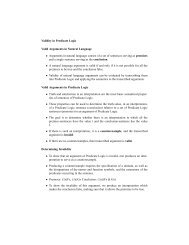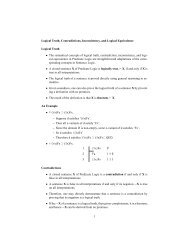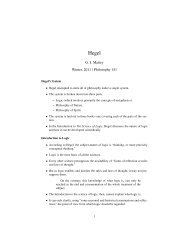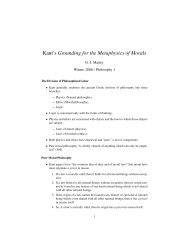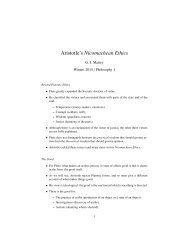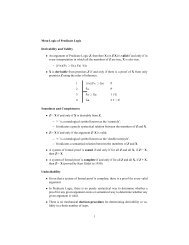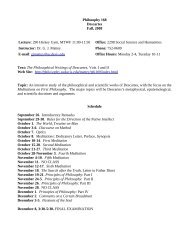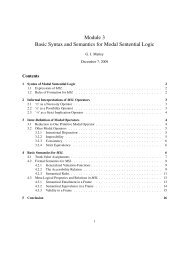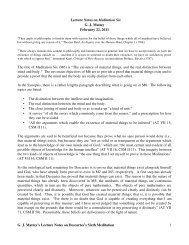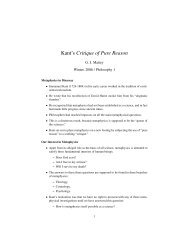Plato's Phaedo - the UC Davis Philosophy Department
Plato's Phaedo - the UC Davis Philosophy Department
Plato's Phaedo - the UC Davis Philosophy Department
Create successful ePaper yourself
Turn your PDF publications into a flip-book with our unique Google optimized e-Paper software.
The Forms• A form is described by attaching ‘itself’ to <strong>the</strong> term that signifies <strong>the</strong> kind.– Two sticks are equal in length.– The form that makes <strong>the</strong>m equal in length is <strong>the</strong> Equal itself.• Plato mentions a number of forms in <strong>the</strong> <strong>Phaedo</strong>:– The Equal itself,– The Greater itself,– The Smaller itself,– The Beautiful itself,– The Good itself,– The Just itself,– The Pious itself,– The Odd itself,– The Even itself,– Smallness itself,– Bigness itself,– The Cold itself,– Twoness itself,– Oneness itself.The Theory of Forms• Things of a kind are distinct from <strong>the</strong> form that makes <strong>the</strong>m of that kind.– Equal sticks are distinct from <strong>the</strong> Equal itself.• Things of a kind are inferior to <strong>the</strong> form that makes <strong>the</strong>m of that kind.– The equality shared by equal sticks is inferior to <strong>the</strong> Equal itself.• A form makes a thing be of a kind in <strong>the</strong> sense that it is <strong>the</strong> cause of its being ofthat kind.– The Equal itself causes equal sticks to be equal.• Things share in <strong>the</strong> forms that make <strong>the</strong>m <strong>the</strong> kind of things <strong>the</strong>y are, taking on<strong>the</strong> corresponding quality.– Two equal sticks share in <strong>the</strong> Equal itself and have <strong>the</strong> quality of beingequal to each o<strong>the</strong>r.2


